Tracy Wilson Brings Elite Skaters Back to the Basics
Tracy Wilson figures she learns as much as she teaches.
Yes, we all know she’s a crack skating analyst for various television networks, having won Gemini Awards for her work. But the former Olympic ice dancing medallist has quietly and behind the scenes fashioned a stellar career as a skating coach to some of the world’s best. Teaching all manner of skaters the true art of the blade, Wilson has become the wind beneath the wings of Olympic champions and world contenders.
And she’s done it through partnerships: Learning from other sports as she teaches their athletes. She’s deconstructed puzzles, and has come out on the other side with exercises and methods that seem to work wonderfully well. Several weeks ago, three of her students placed among the top five in the men’s event at the world championships in Shanghai: new world champ Javier Fernandez, Olympic champion Yuzuru Hanyu and the irrepressible Canadian champion Nam Nguyen who made believers out of many with his fifth-place finish at age 16.
Wilson’s exercises are a hybrid of many things, starting with what worked to make her and partner Rob McCall seven-time Canadian champions, three-time world bronze medalists, and the first Canadian ice dancers to win an Olympic medal (bronze in 1988.) She and McCall did foundation exercises every day as they trained. “It really helped us to find our balance, to create muscle memory so that we weren’t ever having to think,” Wilson said. “Our bodies just know how to maximize efficiency.”
After the death of McCall in 1991, Wilson didn’t skate for five years. She returned to the ice only because her children wanted to skate. Her oldest son, Shane, started playing hockey. Everything changed after a chance meeting with a hockey coach at a cocktail party. Wilson found herself telling him: “Guess what you guys need to do?” The coach asked her if she’d like to do it. Wilson said: “Sure.”
She worked with her son’s team from the time he was about seven or eight until he was in his mid-teens. Another son, Ryan also played hockey. “I just took my ice dance exercises and that’s what I did with these hockey players with music,” she said. She adapted the exercises to the needs of the players.
And of course, the needs were different. She learned that hockey players didn’t care how they looked on ice. They had no need for the pointed-toe thing. They cared about balance and speed and power. She quickly discovered that she had to always stay one step ahead of nine and 10-year-olds, and always tried to come up with new exercises.
“What I gained from them was a freedom,” she said. “It was really interesting to me.” And in turn, she brought that to her figure skating exercises. It’s great to have the correct technique, but best if you couple it with power and energy.
One day, son Shane was on the ice at the Toronto Cricket Skating and Curling Club because he had asked his mother to work with him. Intrigued, U.S. skaters Adam Rippon and Christina Gao, who were training in Toronto at the time, asked if they could train with him. “It was fabulous,” Wilson said. “They got on the ice and you could really see the difference. They were going for style over power. And I said: ‘Guys, just for fun, get in behind Shane. And always listen to his blade and forget about how you look. Just stay in there.’”
She and cohort Brian Orser have both honed in on what works to help different skaters. There is no set formula. When Wilson actually went back to coaching figure skating, her first students were astonishing: Chinese pair stars Xue Shen and Hongbo Zhao. Lori Nichol, who had been choreographing for them, sent them over to Wilson to tinker with their skating skills just as both Orser and Wilson had started at the club.
Together, they worked five hours the first day. Wilson took them right back to the basics. At the time, Yu Na Kim’s mother was in the rink, coming to work with choreographer David Wilson, and she asked if Wilson would work with her daughter.
“Sure,” Wilson said. “When?”
“Monday, Tuesday, Wednesday, Thursday, Friday,” she said. So Kim became Wilson’s second student. She had a whole year to work with Kim. Eventually, whatever Wilson could think up for her, Kim could do.
“If you haven’t really broken down the skating basics to their most simple form, you can’t build on top of it,” Wilson said. She had set Shen and Zhao right back to doing two-foot skating exercises, called bubbles (feet go in and out together), and it was to teach them knee action and balance. They spent about 30 to 40 minutes on the first exercises and then moved to inside edges.
“I just knew if I was going to do for them what they needed, we had to start from the very beginning and I didn’t know any other way,” Wilson said. Later she called Nichol and told her she was going to apologize in advance for frustrating Zhao in particular. Nichol said on the contrary: they had loved it and wanted to do it every day. They trained with Wilson for 10 days in a row.
Last spring, Zhao, now a coach, sent three of his pair teams to Wilson so that she could work with them in the same way. They are the same exercises that Wilson and Orser use to teach beginner skaters and adults.
Wilson has also developed off-ice training over the years, too. She herself had worked Pilates, and dance on the floor and adapted some of those exercises onto the ice. “You can be very creative once you have the basics and see how the principles follow through at all levels,” she said.
Most importantly, in the beginning, Wilson wasn’t sure – coming from an ice dance perspective – if what she was doing was what a single skater or a hockey player, or a synchro skater needs.
“But you know what?” she said. “It is. It’s the same.” Yes, partnerships and cross-discipline learning works.

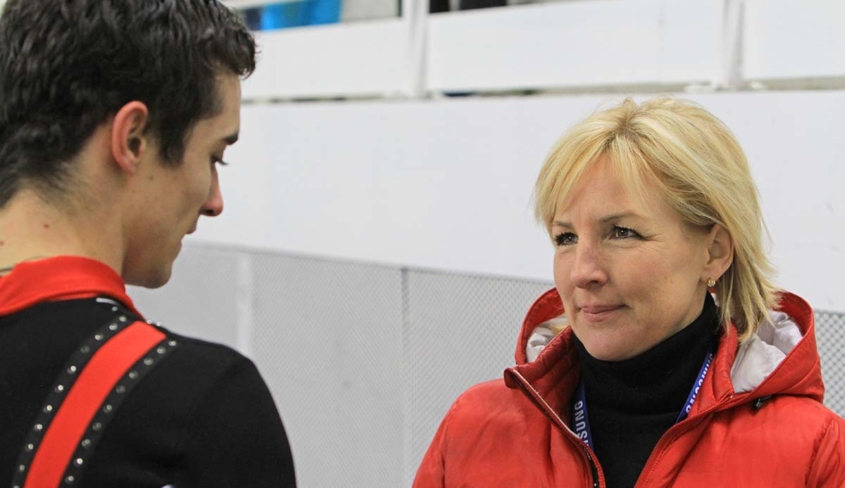
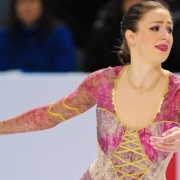

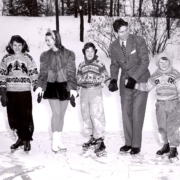
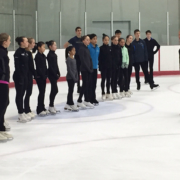
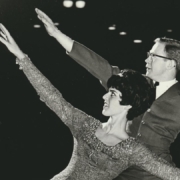
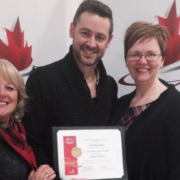


Leave a Reply
Want to join the discussion?Feel free to contribute!